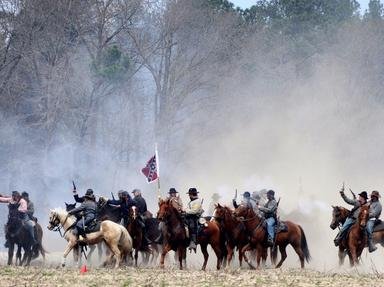
Battles of the Army of the Potomac Quiz
The Army of the Potomac was the United States' main army in the eastern theater of the American Civil War. Put the battles below in chronological order.
An ordering quiz
by ertrum.
Estimated time: 3 mins.

| What's the Correct Order? | Choices |
| 1. (Earliest) | The Battle of Spotsylvania Court House |
| 2. | The Siege of Petersburg |
| 3. (Bloodiest single day of the war) | The Battle of Chancellorsville |
| 4. | The Seven Days Battles |
| 5. (Lee loses his "right arm") | The Battle of Cold Harbor |
| 6. (Round Tops and Cemetery Ridge) | The Battle of Antietam / Sharpsburg |
| 7. | The Battle of Gettysburg |
| 8. (I wonder if Dalmatian dogs live here?) | The Battle of Fredericksburg |
| 9. | The Battle of Seven Pines / Fair Oaks |
| 10. (Battle of the Crater) | The Battle of the Wilderness |